

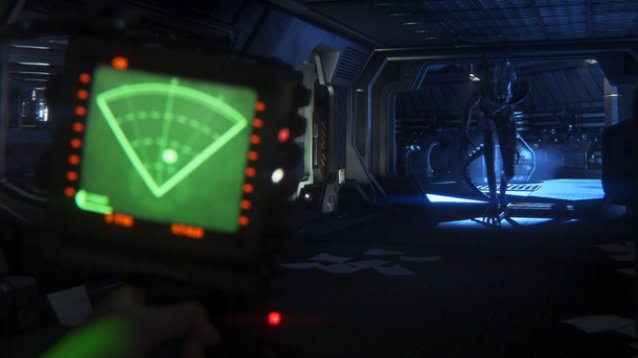
The bulging, spiky life-mass lurches toward Isaac Clarke.
“You better shoot it,” my younger brother tells me from the couch.
“I know.”
The Necromorph is looming over the poor engineer now, practically drooling on his suit.
This is the point where I should be wondering how many rounds I have as I load my weapon (but don’t, thanks to the handy ammo counter) and where, if Dead Space wasn’t such a painfully clean experience, Isaac might drop the ammo to the floor out of pure horror.
He doesn’t. We’ve both been through this process about a hundred times now. He skillfully reloads his weapon; I tap the button to fire. Right before the beastie can tear off Isaac’s head and suck on it like a giant lollipop, a flash of blue from the mouth of the plasma cutter tears the monster in two. A head stomp finishes the job.
That’s when disappointing realization most people who play games regularly have had at one time or another. I pause the game, turn to my little brother.
“I am so bored right now.”
Boredom accurately describes my experience with most horror games from the past two generations. The success of Resident Evil 4, a great game in its own right, in 2005 drastically changed the survival horror genre—and not for the better. Clunky walking became…less clunky, sure, but streamlined shooting mechanics also became a must-have for both established horror series (Resident Evil and Alone in the Dark) and newcomers (Dead Space and Shadows of the Damned). This emphasis on shooting transformed horror games into action games, a power-fantasy of which there was already an abundance.
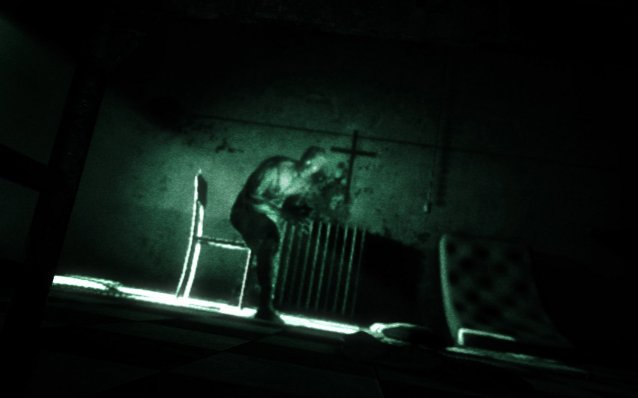
Of course, well-executed horror games are still power-fantasies, but they’re a rarer, arguably more satisfying kind in which the player’s weapons are not conventional ones. Instead, the best horror games are those that urge the player to use his/her wits to try and survive a terrifying, no-win situation. The design decision to give a player conventional weapons to fight enemies in a horror game immediately limits the level to which he/she can be frightened. Matt Cohen, developer of spooky indie game Paranormal, says it best:
Weapons in general in horror games, especially guns, stray away from the point of horror: helplessness. Humans love being in control of situations, be it social, economic, sexual, or anything else. When that control is taken away, they feel helpless. Horror thrives on helplessness. When the player has means to fight their threat, the element of helplessness is eradicated and the horror is undermined rather drastically.
Cohen isn’t alone in thinking that implementing weapons goes against the purpose of horror, as evident by the number of recent indie horror titles lacking weapons.
Slender: The Eight Pages, a game that has the player collecting pages in a forest while being stalked by a faceless figure, is probably the most well-known example of a horror game lacking conventional weapons, which is rather fitting since the game feels little more than a demonstration that, yes, horror games can be compelling and frightening without thrusting a shotgun into the player’s hands.
Both Amnesia games embrace the same basic design of Slender—a player accomplishes the game’s objectives while being pursued by entities that he/she cannot fight conventionally—but both entries toy with that design. The Dark Descent features a sanity mechanic that forces the player to take care of the protagonist’s mental state as well as his physical health; gazing at monsters and spending too much time in the darkness will deplete the Sanity indicator and cause hallucinations—yet another mechanic encouraging the player to take flight. A Machine for Pigs, interestingly enough, does away with the sanity indicator in an attempt to focus the player’s attention on the story that The Chinese Room and Frictional Games want to tell. Even among the critical darling AAA games that are story-focused driven (The Last of Us, Bioshock Infinite) there still exist plot contrivances so that the player ends up shooting a lot of Bad Dudes. A Machine for Pigs, however, places enemies where it makes sense for them to be placed; if the story isn’t best served by having some enemies in a certain area, then they simply aren’t there.
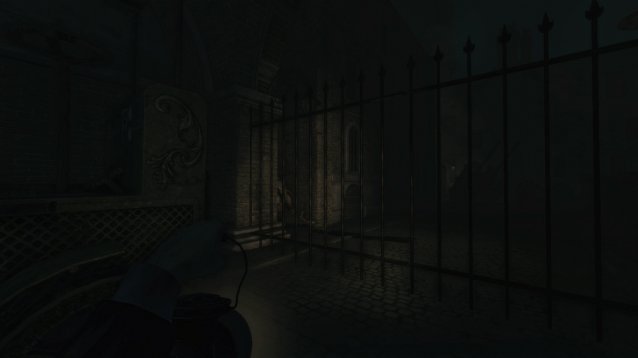
Red Barrels’ Outlast is the most fascinating of these recent indie horror games partially because of just how trashy and eager to please it is. Slender and A Dark Descent certainly aren’t subtle horror tales, but Outlast resorts to every trick in the book, no matter how cheap or gross to try and scare the player. The game unabashedly sticks the player in the role of an unarmed journalist who’s far too stupid to realize that investigating an asylum in the middle of the night is a poor decision— this is the guy who normally wouldn’t rate above fodder for a slasher flick. Deranged, nude killers track the player, promising to eat his/her spleen; men masturbate in cells; decapitated heads rest on bookshelves, their dead eyes wide open—one guy has sex with a corpse. The asylum is a ludicrously torture-porn, B-horror movie version of hell, and the decision to make the player helpless is what makes all of those elements work and not seem exploitive.
While Outlast may be the most peculiar of the bunch, Cohen’s Paranormal is probably the best new horror game, because it best demonstrates what truly great horror games can do. Cohen’s game draws inspiration from the likes of The Blair Witch Project, Grave Encounters, and Paranormal Activity by having the player view the world through a camcorder with night vision. Outlast has this same mechanic, of course, but that game has its own clearly defined, linear story. Paranormal, which is about an artist filming the entity haunting his house, has a system that randomizes the spirit’s actions. For example, if the player comes down the stairs for the first time in the game, there’s a chance furniture is levitating. Next time he/she starts the game up, there might be blood on the walls, or maybe the phone rings. Following in the footsteps of those aforementioned films, the haunting becomes more violent as the (rather short) game progresses.
Paranormal is special because it takes the found footage film subgenre and, perhaps unintentionally, makes the case that the genre works better in games than it does in film, at least as a means for eliciting scares. Sticking the user’s avatar into a found footage game, as opposed to having them viewing a film, closes the distance between the player/viewer and the scares. The player is no longer watching Katie and Micah investigate the demonic presence haunting their house—they are those characters. The random generation element also helps make each player’s story his/her own and adds to the feeling of helplessness, even in subsequent playthroughs.
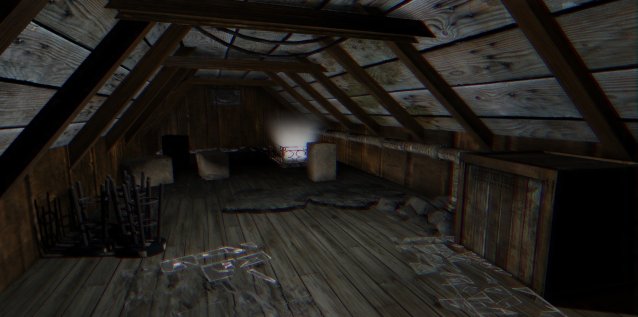
All of these independently-developed titles are centered around making the player feel powerless and forcing them to use other means besides brute force to complete each game. But why are indies the only ones earnestly trying to create horror games undiluted by action? The answer is pretty simple: gamers love blunt power fantasies. Consider the biggest AAA games of this generation: Bioshock, Call of Duty, Halo, Gears of War, Grand Theft Auto, Mass Effect, Uncharted. All these games, to one degree or another, require the player to shoot or QTE their way through most of the obstacles game throws in the player’s path. The reason we don’t have AAA horror games is because in an industry where the most profitable and marketable games are ones where the player is given a considerable amount of power the assumption seems to be that robbing the players of that power would be financial suicide.
This makes Sega and Creative Assembly’s upcoming Alien: Isolation the most fascinating AAA game of 2014 for me. It is a game set in a franchise that’s had its name recently tracked in the mud; it’s a game that stars a woman; it’s a game that refuses to give the player weapons and opts instead to ape the design of Amnesia, having the player hunted across a space station by a single terrifying monster.
There’s a lot riding on this game. Critical and financial success could send a message about what players want more of from AAA developers and publishers in a language that, sadly, is much more persuasive than detailed op-eds or exquisitely written blog posts. Of course, no matter how successful that game is, I doubt it would exist in the first place if Amnesia: The Dark Descent hadn’t made the player powerless first.
Thank the Great Old Ones for indies.

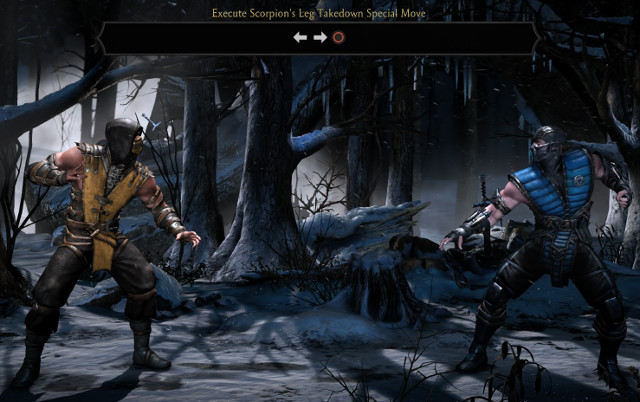
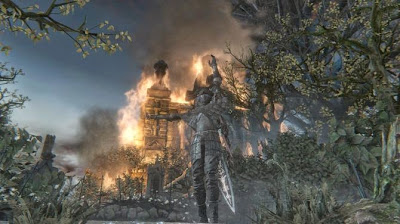

 Monster Hunter 4: 6 Essential Tips For Newcomers
Monster Hunter 4: 6 Essential Tips For Newcomers Bloodborne: The Old Hunters - How to Get the Loch Shield
Bloodborne: The Old Hunters - How to Get the Loch Shield Remember Interactive Movies? They Could Be Set To Make A Comeback
Remember Interactive Movies? They Could Be Set To Make A Comeback Destiny: The Spinmetal material guide
Destiny: The Spinmetal material guide All Steam Machines Prices And Specs Guide
All Steam Machines Prices And Specs Guide